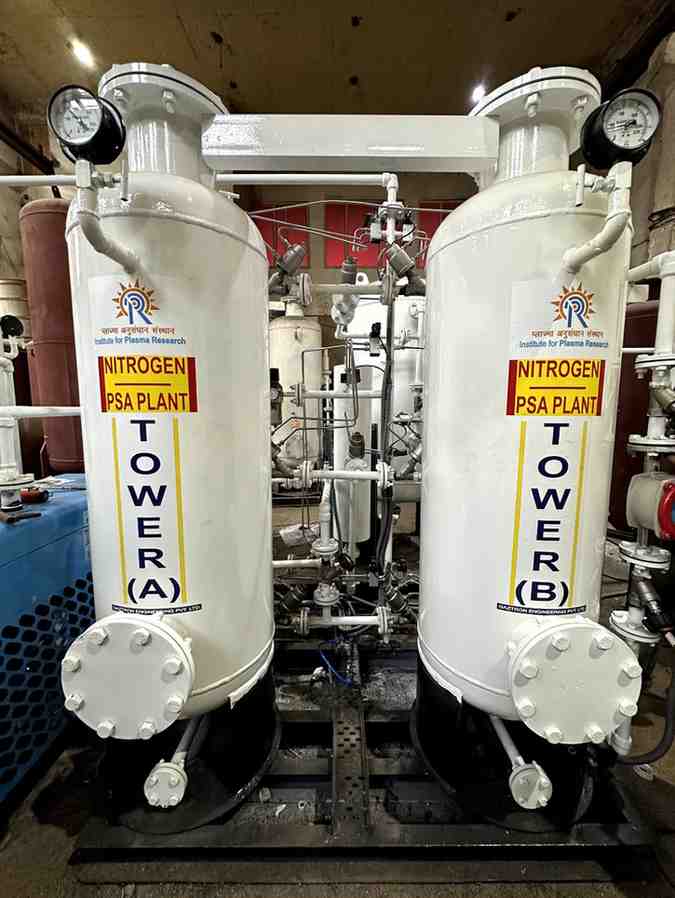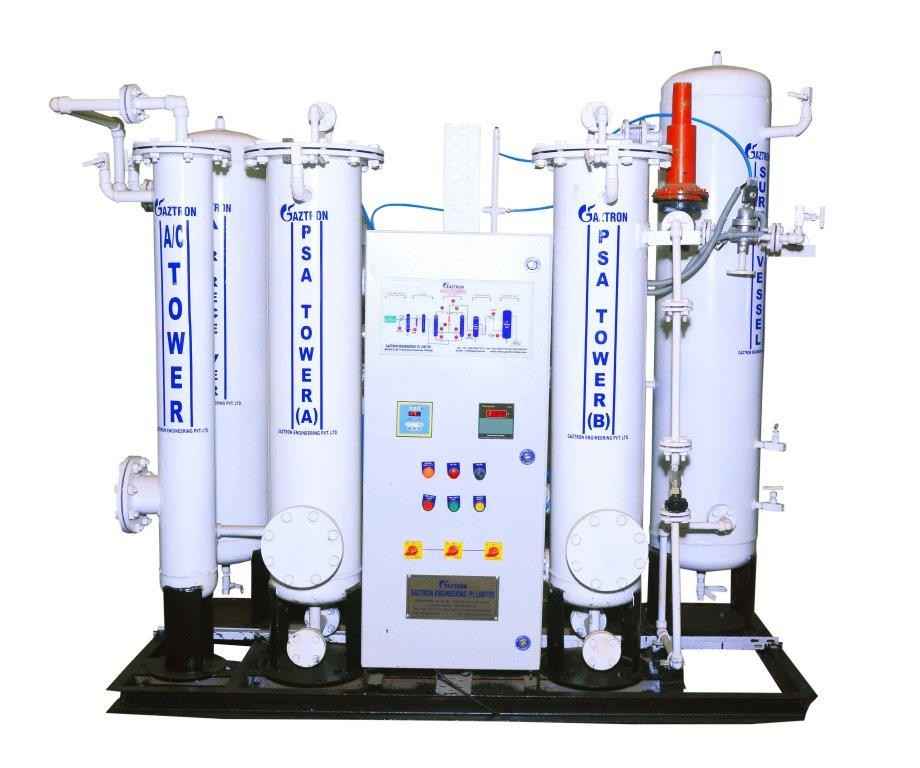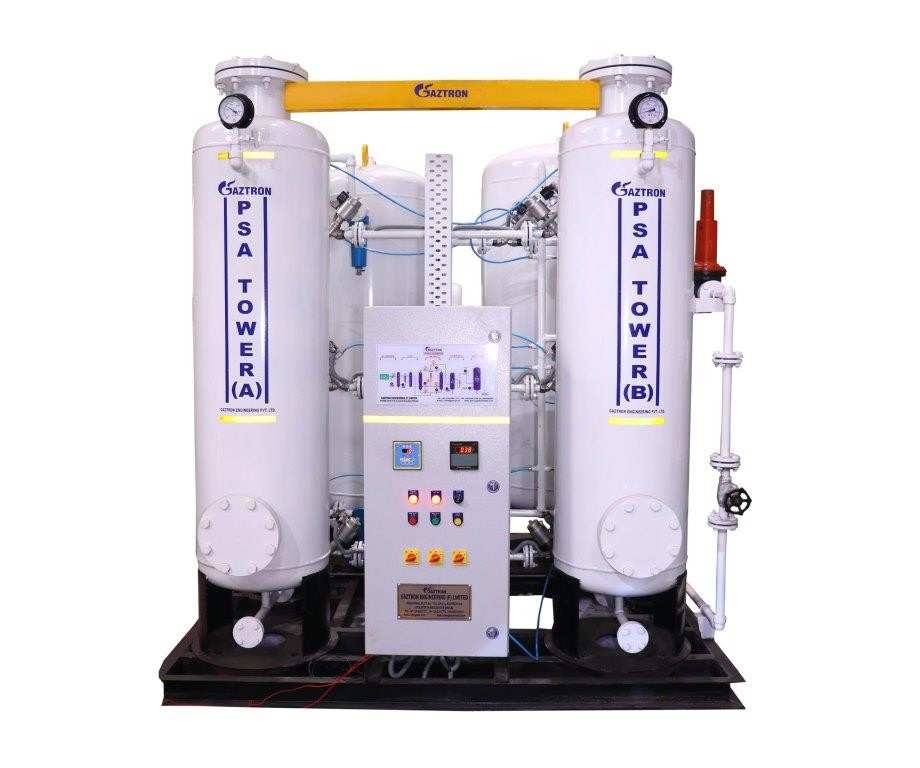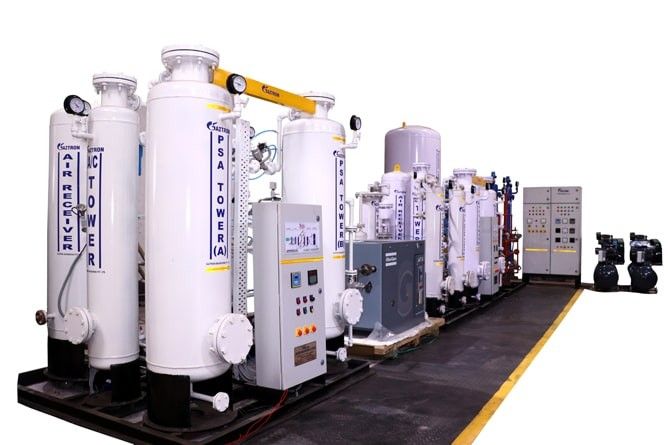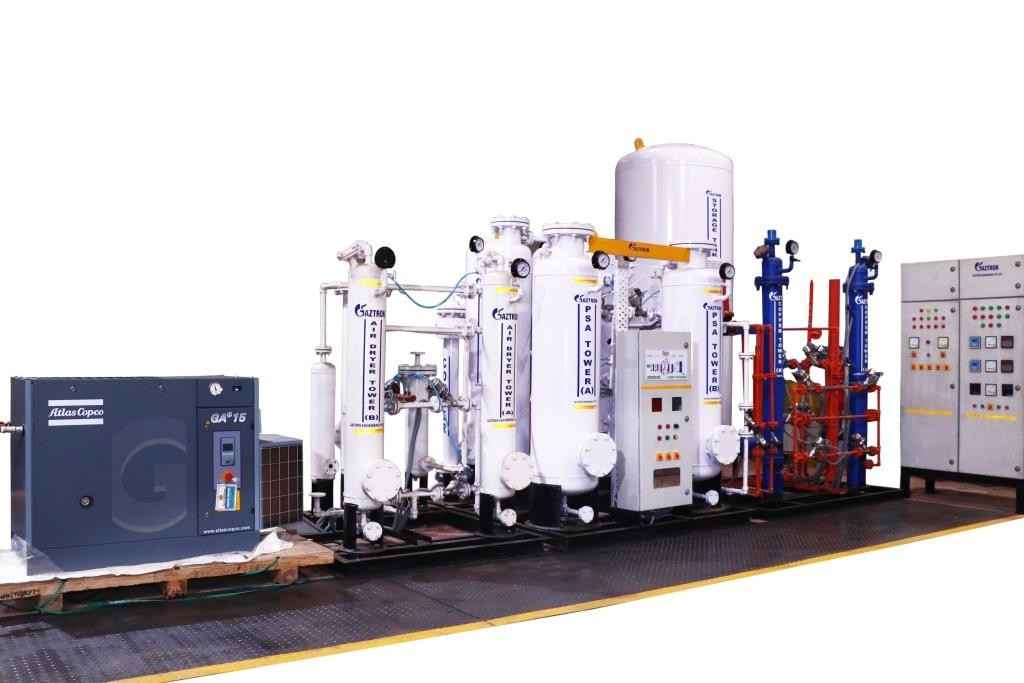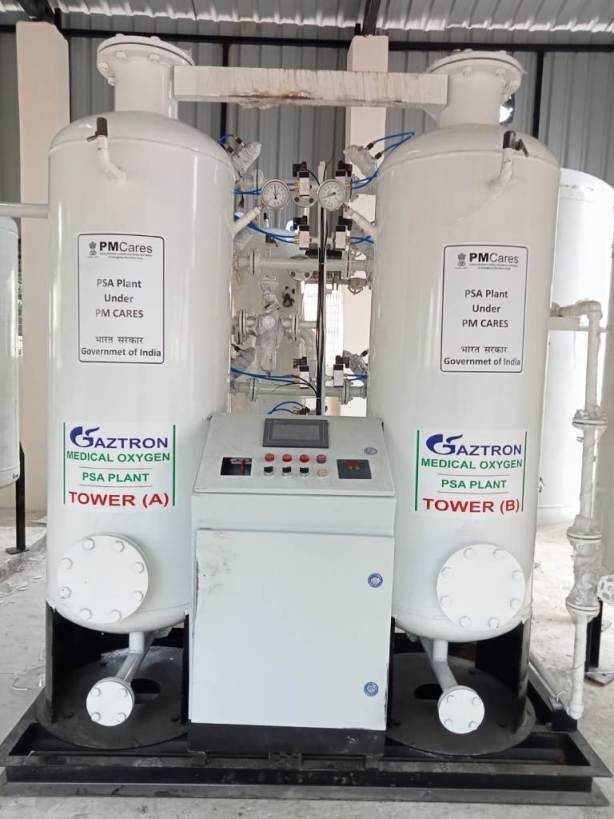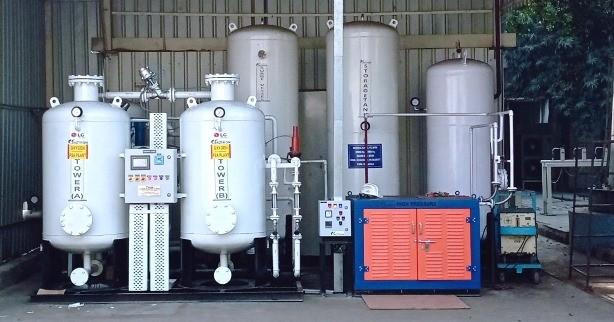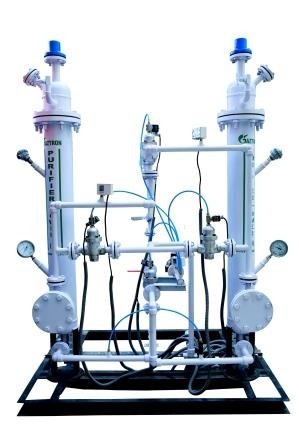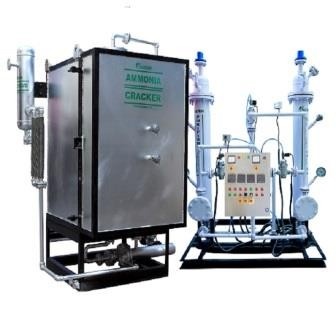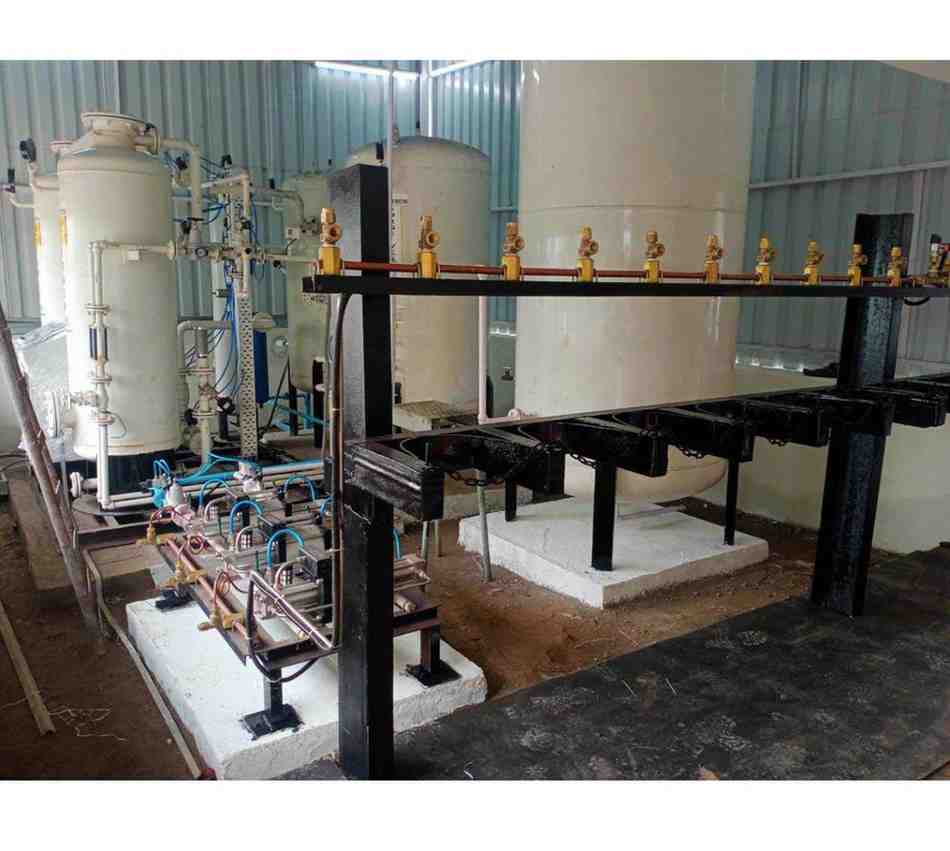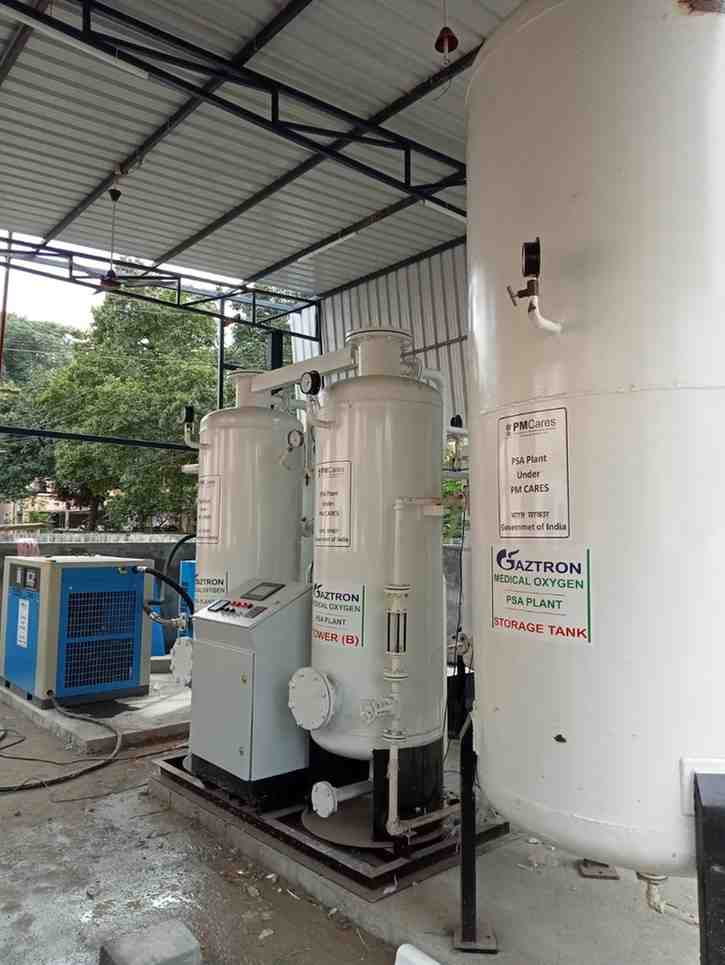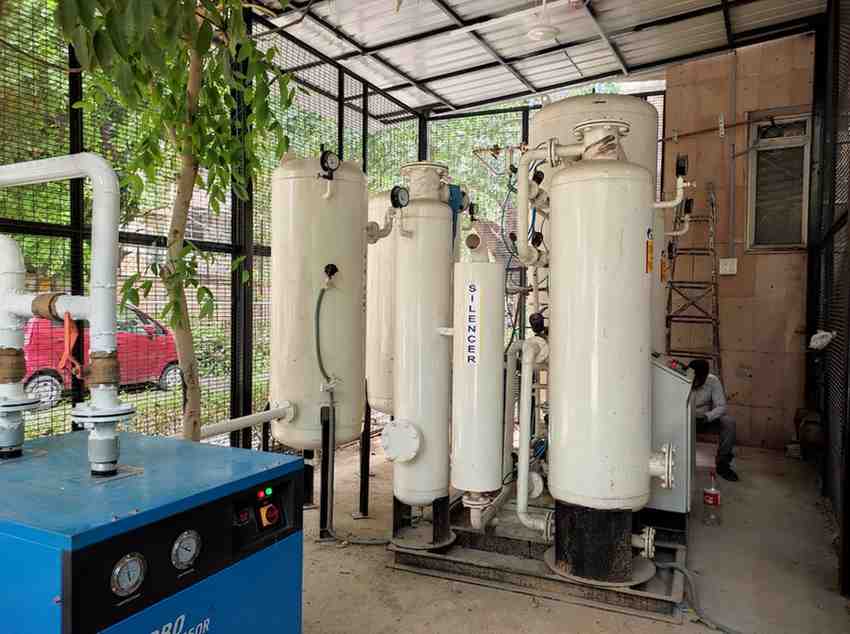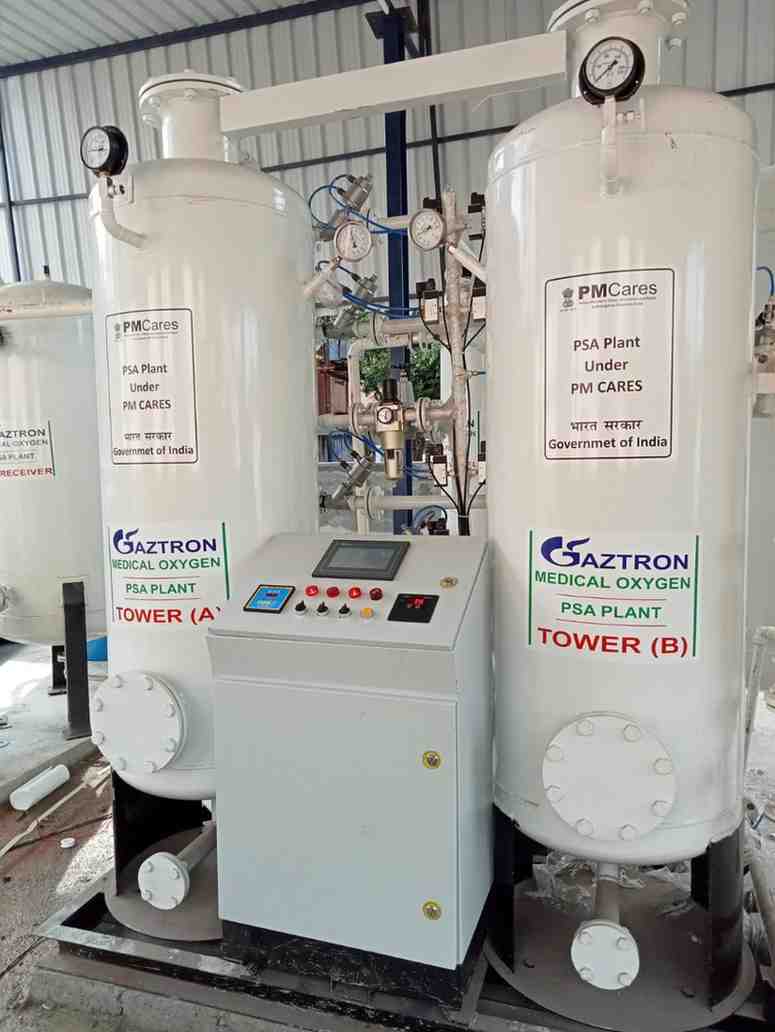Gaztron Engineering Private Limited, we proudly stand as India's top manufacturers and exporters of PSA Nitrogen N2 Gas Generator Plants. Our widely acclaimed MS Model is a trusted choice in various industries, offering purity levels from 90% to 99.99%.
The versatile applications of our PSA Nitrogen (N2) Gas Generator Plant MS Model include:
- Chemical Industries: Inerting reactions, purging pipelines, and protecting sensitive equipment.
- Food & Packaging: Maintaining freshness, preventing oxidation, and extending shelf life.
- Pharmaceuticals: Sterilizing environments, purging tanks, and ensuring product quality.
- Fire Control: Suppressing blazes in coal mines and other hazardous environments.
- Automobile Tires: Inflating tires with nitrogen for increased pressure stability and fuel efficiency.
- Air-Driven Tools & Machinery: Optimizing performance and prolonging lifespan.
- Bacteria Elimination: Creating sterile environments for various processes.
- Adhesive Curing: Promoting efficient and consistent adhesive bonding.
- Brazing: Protecting metals from oxidation during high-temperature joining.
- Cable Splice Drying: Ensuring reliable connections by removing moisture from cable splices.
- Cement Plants: Controlling dust emissions and improving product quality.
- Oil Recovery Enhancement: Boosting oil production through nitrogen injection.
- Nitrogen Inertisation System for Coal Mill Bag Filter & Fine Coal Bins: Ensuring safety in coal mills by inerting systems.
Technical Specification of PSA Nitrogen (N2) Gas Generator Plant MS Model
- Gaztron Nitrogen Generator Flow Range: 5 Nm3/hr to 1000 Nm3/hr.
- Nitrogen Gas Purity: 98% to 99.9%.
- Nitrogen Gas Dew Point: -40°C to 80°C.
- Nitrogen Gas Pressure: 5 Kg/cm2 to 140 Kg/cm2
Gaztron's PSA Nitrogen Gas Generator MS Model Available Ranges
|
MODEL
|
CAPACITY NM3/HR
|
|
GAZ-MS-05
|
0 TO 5 NM3/HR
|
|
GAZ-MS-10
|
6 TO 10 NM3/HR
|
|
GAZ-MS-20
|
11 TO 20 NM3/HR
|
|
GAZ-MS-30
|
21 TO 30 NM3/HR
|
|
GAZ-MS-50
|
31 TO 50 NM3/HR
|
|
GAZ-MS-100
|
51 TO 500 NM3/HR
|
What Is Working principal of PSA Nitrogen Gas Plant
The PSA (Pressure Swing Adsorption) technology employed in our Nitrogen Gas Plants utilizes an absorbent bed of Carbon Molecular Sieve (CMS). Operating under pressure, this bed selectively attracts oxygen more strongly than nitrogen, allowing nitrogen-enriched gas to pass through the vessel. When the CMS reaches its oxygen absorption capacity, a pressure reduction regenerates the bed, initiating another cycle of nitrogen production.
PSA (Pressure Swing Adsorption) Nitrogen Generation Technology Insight:
PSA, known as the best air separation technology, maintains a crucial role in on-site gas supply. The adsorption balance within the carbon molecular sieve is pressure-dependent. Higher pressures facilitate the adsorption of oxygen, carbon dioxide, and water, while reduced pressures limit their absorption.
The PSA equipment comprises two adsorption towers, A and B, housing the carbon molecular sieve and control system. Clean compressed air enters Tower A and undergoes oxygen, carbon dioxide, and water absorption while nitrogen exits from the top. Tower A automatically halts adsorption, redirecting air to Tower B for oxygen adsorption and nitrogen production, allowing Tower A's carbon molecular sieve to regenerate.
PSA Nitrogen Generation Technology Stages:
- Feed Air Compression and Conditioning: Ambient air undergoes compression, drying, and filtration before entering the process vessels.
- Pressurization and Adsorption: Pre-treated air passes through a vessel containing Carbon Molecular Sieve, preserving oxygen while nitrogen attains adjustable purity.
- Desorption: Adsorbed gases release through pressure reduction, vented as waste, regenerating the adsorbent for nitrogen generation.
- Nitrogen Receiver: Continuous nitrogen generation occurs using two adsorbers—adsorption in one, regeneration in the other—ensuring high purity (up to 99.995%) and pressure (up to 7.5 bar/110 PSIG).
- Nitrogen Product: The result is a consistent supply of on-site produced high-purity nitrogen.
Gaztron's MS model PSA Nitrogen Gas Generator utilizes a cutting-edge technology called Pressure Swing Adsorption (PSA) to deliver reliable, on-site nitrogen production.
Imagine this: Air streams through a vessel filled with a special material called Carbon Molecular Sieve (CMS). This CMS has a secret weapon: it loves attracting oxygen more than nitrogen. So, as the air passes, oxygen gets trapped in the CMS, while nitrogen flows out, enriched and ready for your needs.
But here's the magic: When the CMS gets full of oxygen, it's time for a refresh. We simply reduce the pressure, and voilà, the trapped oxygen is released back into the atmosphere, freeing up the CMS to start the whole process again. This cycle repeats continuously, ensuring a steady flow of pure nitrogen.
Why On-Site PSA Nitrogen Generation? Here's what makes it special:
- Versatile and Efficient: The MS model offers purity levels ranging from 90% to 99.99%, catering to diverse industry needs with exceptional flow rates (5 Nm3/hr to 1000 Nm3/hr).
- Reliable and Durable: Built with robust components and meticulous engineering, the MS model delivers unwavering performance and long-lasting operation.
- Cost-Effective and Eco-Friendly: Eliminate dependence on bulky cylinders and enjoy the benefits of on-site generation. Plus, PSA technology minimizes waste and is gentler on the environment.
From the intricate technology to the impactful results, the MS model PSA Nitrogen Gas Generator is a true game-changer.
Ready to unlock the power of nitrogen for your business? Contact Gaztron today and discover how our PSA Nitrogen Gas Genrator MS model can revolutionize your operations.

